Table of Contents
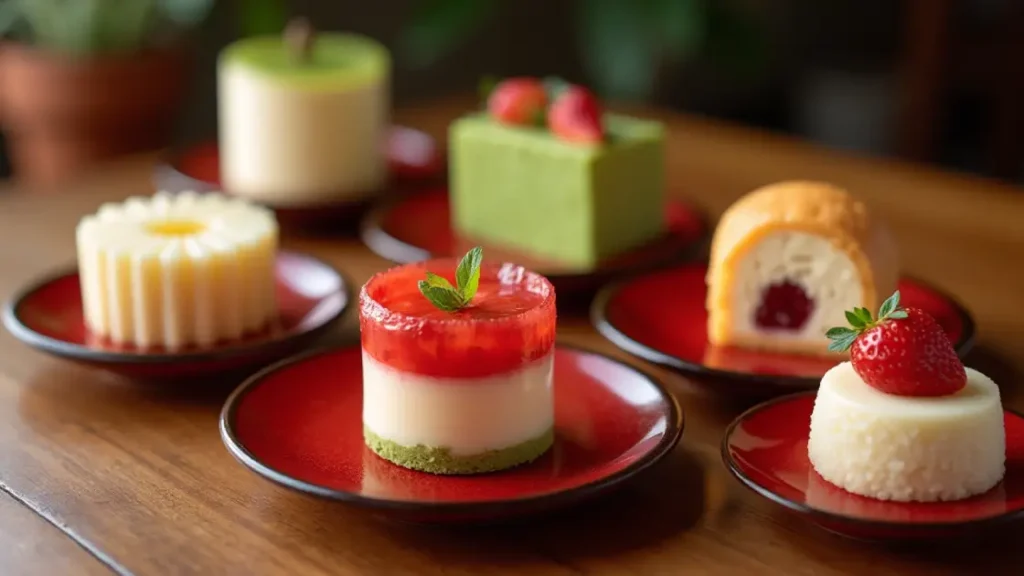
Introduction: Discover the Best Japanese Cake Recipes – Light, Fluffy, and Irresistible
Japan is renowned not only for its rich culture and exquisite cuisine but also for its exceptional desserts. If you’re looking to explore a new world of baking, Best Japanese cake recipes are the perfect place to start!
What makes Japanese cakes so special? It’s their delicate, melt-in-your-mouth texture, perfectly balanced sweetness, and elegant presentation. From the airy Japanese cheesecake to the honey-infused Castella cake, each recipe carries a blend of tradition and modern flair.
Whether you’re a seasoned baker or just starting out, you can easily recreate these delightful treats in your own kitchen. Why not kick off your weekend by trying a new recipe and indulging in the flavors of Japan? Get ready to explore a world of light, fluffy, and absolutely irresistible Japanese cakes!
What’s the Secret Behind the Fluffy Texture and Delightful Taste of Japanese Cakes?
Japanese cakes differ from Western cakes in several ways:
- Light and Fluffy Texture: Many Japanese cakes use whipped egg whites to create a soft, airy consistency.
- Mild Sweetness: Japanese desserts tend to be less sugary than their Western counterparts.
- Minimal Ingredients: Simple, high-quality ingredients like eggs, flour, and sugar enhance natural flavors.
- Aesthetic Appeal: Japanese cakes are often decorated elegantly, with minimal but thoughtful presentation.
Comparison Between Japanese and Western Cakes
| Feature | Japanese Cakes | Western Cakes |
|---|---|---|
| Texture | Light, fluffy, airy | Dense, rich, creamy |
| Sweetness Level | Mild, natural sweetness | Higher sugar content |
| Common Ingredients | Simple, natural (e.g., matcha, kinako, azuki beans) | Butter, sugar, heavy cream |
| Presentation | Elegant, minimal | Often heavily frosted or decorated |
Now, let’s explore the best Japanese cake recipes that you can recreate in your kitchen!
Japanese cakes are light, mildly sweet, and elegantly simple. Try making them at home!
Japanese Fluffy Cheesecake Recipe
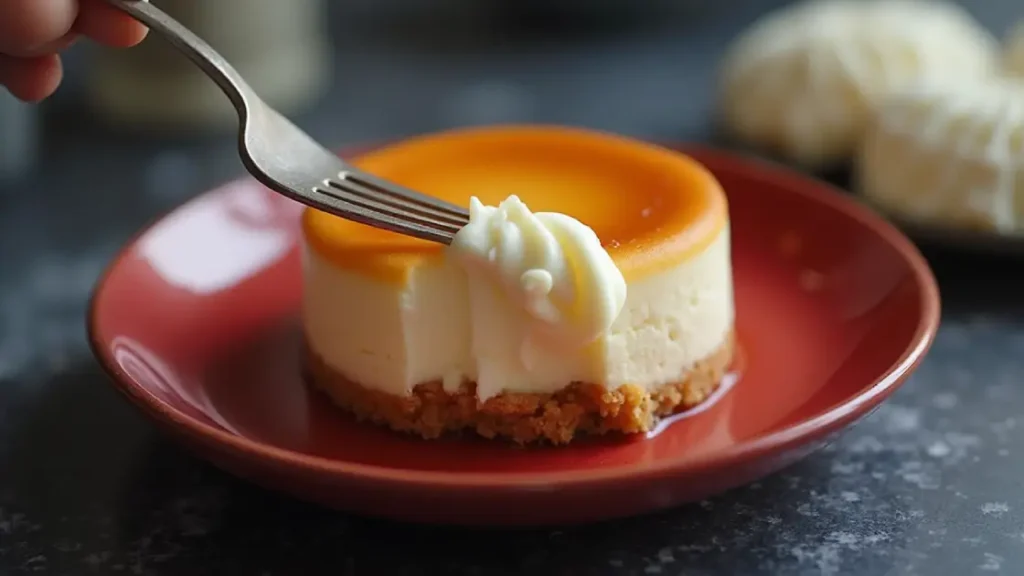
Ingredients
| Ingredient | Quantity |
| Cream cheese | 250g |
| Eggs | 4 |
| Milk | 100ml |
| Sugar | 120g |
| Cake flour | 60g |
| Cornstarch | 20g |
| Lemon juice | 1 tbsp |
| Butter | 50g |
| Vanilla extract | 1 tsp |
Instructions
- Preheat your oven to 320°F (160°C) and line a cake pan with parchment paper.
- Melt cream cheese, butter, and milk over a double boiler until smooth.
- Separate egg yolks and whites. Add yolks, sugar, lemon juice, and vanilla to the cheese mixture.
- Sift in cake flour and cornstarch, then fold gently.
- Beat egg whites until stiff peaks form, then fold into the batter carefully.
- Pour batter into the pan and bake in a water bath for about 60 minutes.
- Let the cake cool in the oven before serving.
Why Japanese Fluffy Cheesecake is Special
- Light & Airy Texture – A perfect balance between a souffle and a cheesecake.
- Delicate Sweetness – Less sugary than Western cheesecakes, highlighting the creamy flavor.
- Jiggly & Fun to Eat – Its signature wobble makes it visually appealing.
- Moist & Cloud-Like – Thanks to a unique water bath baking method.
- Less Dense, More Satisfying – Feels indulgent without being overly heavy.
- A True Culinary Masterpiece – Requires precise techniques for perfection.
Castella Cake Recipe
Ingredients
| Ingredient | Quantity |
| Eggs | 6 |
| Sugar | 200g |
| Bread flour | 100g |
| Honey | 2 tbsp |
| Milk | 2 tbsp |
| Vanilla extract | 1 tsp |
Instructions
- Preheat oven to 320°F (160°C). Line a loaf pan with parchment paper.
- Beat eggs and sugar until the mixture triples in volume.
- Sift in flour, fold gently, then mix in honey, milk, and vanilla.
- Pour into the pan and bake for 50 minutes.
- Let cool completely before slicing.
Why Castella Cake is Special
- The honey gives it a distinct flavor and moist texture.
- It’s best enjoyed the next day after resting to let flavors meld.
Matcha Sponge Cake Recipe

Ingredients
| Ingredient | Quantity |
| Eggs | 4 |
| Sugar | 100g |
| Cake flour | 80g |
| Matcha powder | 2 tbsp |
| Baking powder | 1 tsp |
| Milk | 3 tbsp |
Instructions
- Preheat oven to 350°F (175°C).
- Beat eggs and sugar until fluffy.
- Sift flour, matcha, and baking powder together.
- Fold dry ingredients into egg mixture, then add milk.
- Pour into a pan and bake for 30 minutes.
- Let cool before slicing.
Why Matcha Sponge Cake is Special
- Vibrant Green Color & Earthy Aroma – Derived from high-quality matcha powder.
- Balanced Flavor – A perfect mix of sweetness and slight bitterness.
- Rich in Antioxidants – Matcha provides health benefits.
- Light & Airy Texture – Achieved through careful egg whipping and precise baking.
- Versatile Pairing – Enjoy with whipped cream, red bean paste, or on its own.
- Symbol of Japanese Elegance – A refined treat for tea lovers.
Mochi Cake Dessert Recipe
Ingredients
| Ingredient | Quantity |
| Glutinous rice flour | 200g |
| Sugar | 100g |
| Coconut milk | 200ml |
| Baking powder | 1 tsp |
| Red bean paste (optional) | 100g |
Instructions
- Preheat oven to 350°F (175°C).
- Mix all ingredients until smooth.
- Pour batter into a greased pan.
- Bake for 45 minutes.
- Let cool before serving.
Why Mochi Cake Dessert is Special
- Chewy & Delightfully Bouncy Texture – Thanks to glutinous rice flour.
- Naturally Gluten-Free – A great option for those with gluten sensitivities.
- Mild Sweetness with a Buttery Finish – Perfectly balanced flavors.
- Endlessly Customizable – Can be flavored with matcha, chocolate, or fruit.
- Stays Soft for Days – Unlike traditional cakes, it maintains its chewiness.
- Deeply Rooted in Japanese Tradition – Inspired by classic mochi desserts.
Taiyaki (Japanese Fish-Shaped Cake)
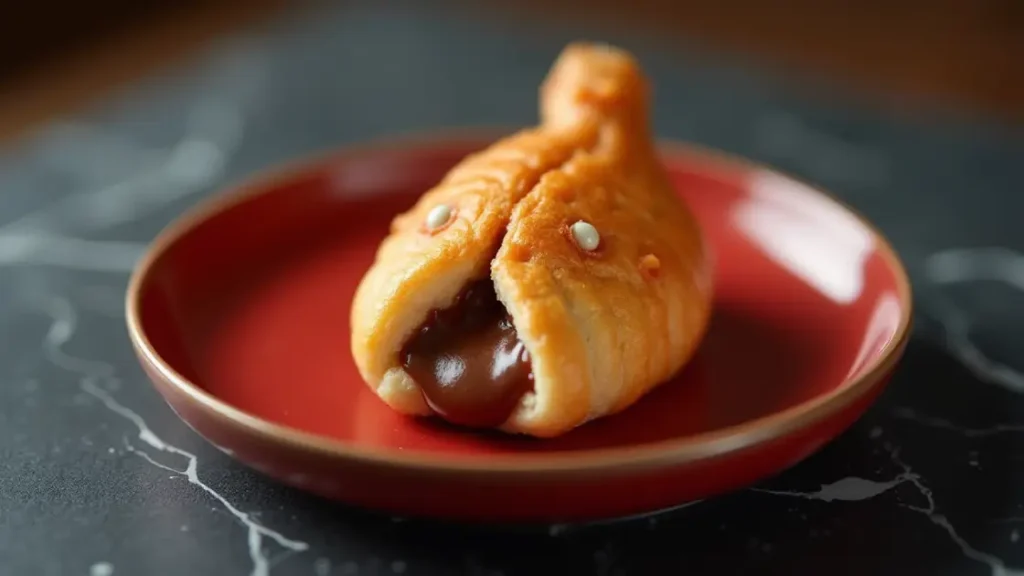
Ingredients
| Ingredient | Quantity |
|---|---|
| All-purpose flour | 200g |
| Sugar | 50g |
| Baking powder | 1 tsp |
| Egg | 1 |
| Milk | 100ml |
| Water | 50ml |
| Custard or red bean paste | 150g |
| Vegetable oil | 1 tbsp |
Instructions
- In a bowl, mix the flour, sugar, and baking powder.
- Add the egg, milk, and water, and mix until smooth.
- Heat a Taiyaki pan over medium heat and lightly grease with vegetable oil.
- Pour batter into the pan to cover the fish mold.
- Add a spoonful of custard or red bean paste in the center.
- Pour more batter on top to cover the filling.
- Close the pan and cook for about 3-4 minutes on each side until golden brown.
- Remove from the pan and let cool slightly before serving.
Why Taiyaki is Special
- Iconic Fish Shape – A fun and unique design that makes it instantly recognizable.Crispy Outside, Soft Inside – Perfect contrast of textures in every bite.
- Versatile Fillings – Traditionally filled with sweet red bean paste, but also comes in custard, chocolate, and even savory flavors
- Nostalgic Street Food – A beloved treat in Japan, often enjoyed warm from food stalls.
- Easy to Enjoy On-the-Go – A handheld delight that’s both delicious and convenient.
- Perfectly Golden & Aromatic – Crisp edges and a comforting, sweet aroma make it irresistible.
Dorayaki (Japanese Pancake Sandwich)
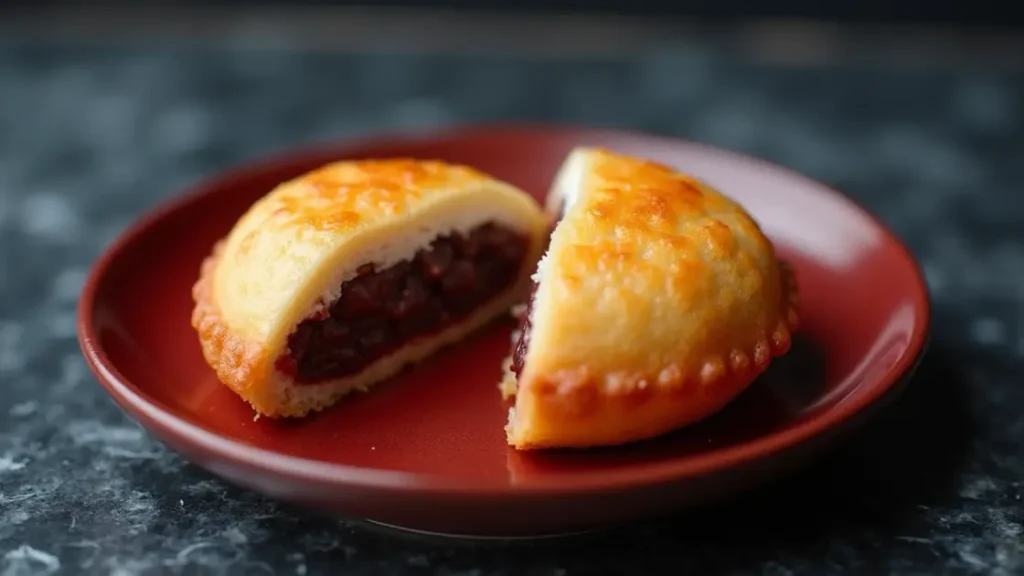
Ingredients
| Ingredient | Quantity |
|---|---|
| All-purpose flour | 200g |
| Sugar | 100g |
| Honey | 2 tbsp |
| Eggs | 2 |
| Baking powder | 1 tsp |
| Red bean paste | 150g |
Instructions
- In a bowl, whisk eggs and sugar until fluffy.
- Add honey, baking powder, and flour, and mix to form a smooth batter.
- Heat a non-stick pan over medium-low heat.
- Pour a small amount of batter onto the pan to form round pancakes.
- Cook for 1-2 minutes on each side until lightly golden.
- Spread red bean paste on one pancake and top with another to form a sandwich.
- Serve immediately or refrigerate for later.
Why Dorayaki is Special
- Soft & Fluffy Pancakes – Made with honey-infused batter for a lightly sweet, tender texture.
- Delicious Sweet Filling – Traditionally filled with red bean paste, but also available with custard, chocolate, or matcha cream.
- Balanced Sweetness – Not overly sugary, making it a perfect treat for any time of the day.
- Loved by All Ages – A nostalgic favorite in Japan, enjoyed by both children and adults.
- Cultural Icon – Popularized by the anime character Doraemon, making it a beloved snack worldwide.
- Perfect for Tea Time – Pairs beautifully with green tea, enhancing its subtle sweetness.
Japanese Strawberry Shortcake
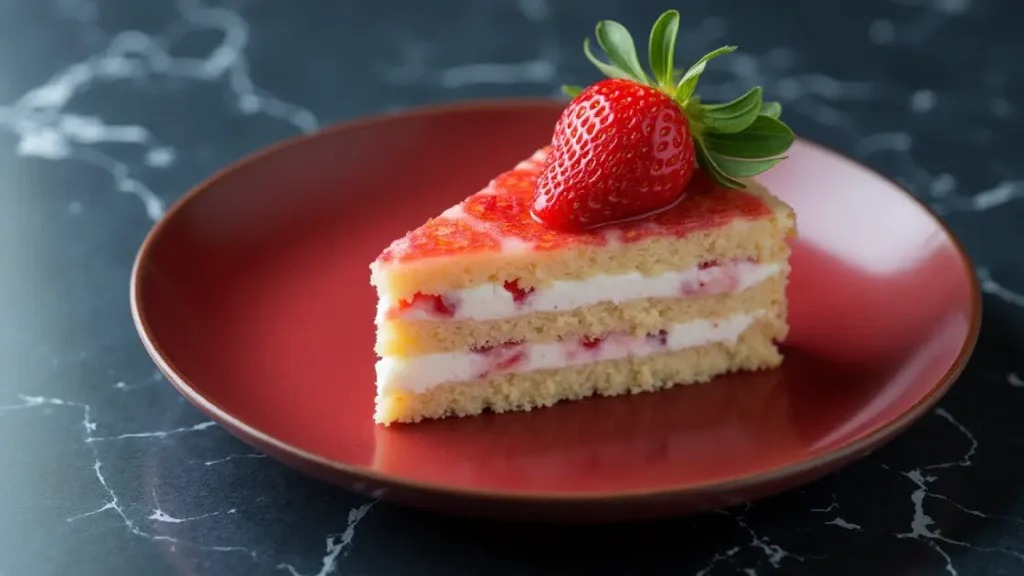
Ingredients
| Ingredient | Quantity |
|---|---|
| Sponge cake | 1 (store-bought or homemade) |
| Fresh strawberries | 300g |
| Heavy cream | 250ml |
| Powdered sugar | 2 tbsp |
| Vanilla extract | 1 tsp |
Instructions
- Whip the heavy cream with powdered sugar and vanilla extract until soft peaks form.
- Slice the strawberries into thin slices.
- Slice the sponge cake into two layers.
- Spread a layer of whipped cream on the bottom layer of cake, then top with sliced strawberries.
- Place the second layer of cake on top, and cover the whole cake with whipped cream.
- Decorate the top with more sliced strawberries.
- Chill for 1 hour before serving.
Why Japanese Strawberry Shortcake is Special
- Beautifully Layered – The combination of sponge, cream, and strawberries creates a visually stunning dessert.
- Light & Airy Sponge – Made with a delicate chiffon or genoise sponge, giving it a soft and fluffy texture.
- Fresh Whipped Cream – Uses lightly sweetened fresh cream for a smooth, melt-in-your-mouth experience.
- Juicy Strawberries – The perfect balance of tart and sweet, adding freshness to every bite.
- Not Overly Sweet – Unlike Western shortcakes, it has a refined sweetness that enhances the natural flavors.
- Elegant & Festive – A popular choice for celebrations, especially birthdays and Christmas in Japan.
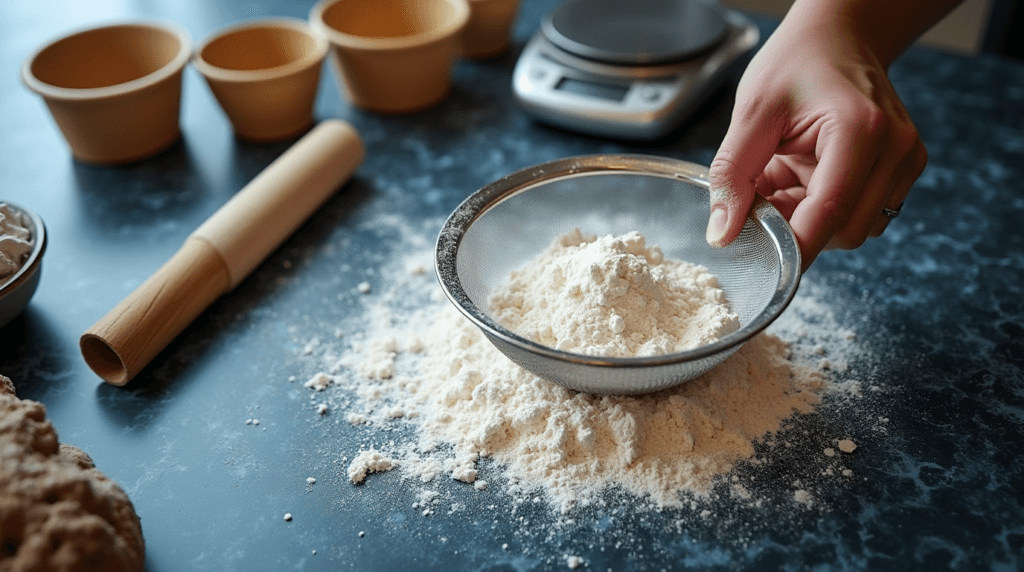
Japanese cakes are light, fluffy, and delicately sweet. From airy cheesecakes to chewy mochi and nostalgic Taiyaki, each offers a unique taste of Japan!
Health Benefits and Calories
Why Japanese Cake Is More Than Just a Dessert? Amazing Benefits of Its Ingredients!
Japanese cakes are not only delicious but also tend to be lighter and made with ingredients that offer unique health benefits. Here’s a look at the key benefits of the ingredients used in some of the most beloved Japanese cakes:
Matcha Sponge Cake
- Rich in Antioxidants: Matcha, made from powdered green tea leaves, is packed with antioxidants that help fight free radicals in the body. This can help reduce inflammation and support overall health.
- Boosts Metabolism: Matcha is known to boost metabolism and increase fat burning, making it a great choice for those looking to maintain a healthy weight.
Mochi Cake
- Gluten-Free: Made with glutinous rice flour, mochi cake is naturally gluten-free, making it a suitable option for people with gluten sensitivities or celiac disease.
- Energy Boosting: The rice flour provides slow-releasing carbohydrates, offering a steady source of energy throughout the day.
Castella Cake
- No Butter: Unlike traditional butter cakes, Castella cake is made without butter, making it lighter and lower in fat.
- Rich in Protein: With its egg-based structure, Castella cake offers a modest amount of protein, which is important for muscle repair and overall body function.
This table provides a comparison of the calorie content, key ingredients, and health benefits of various Japanese cakes, helping you choose the best recipe based on your dietary preferences.
| Japanese Cake | Calories per Serving (Approx.) | Main Ingredients | Health Benefits |
|---|---|---|---|
| Japanese Fluffy Cheesecake | 250 kcal | Cream cheese, eggs, sugar, flour | High in protein, lower in sugar than regular cheesecake |
| Castella Cake | 210 kcal | Flour, sugar, eggs, honey | Rich in antioxidants (honey), simple ingredients |
| Matcha Sponge Cake | 180 kcal | Matcha powder, eggs, sugar, flour | High in antioxidants, boosts metabolism |
| Mochi Cake | 220 kcal | Glutinous rice flour, sugar, milk | Gluten-free, provides long-lasting energy |
| Taiyaki (Fish-Shaped Cake) | 190 kcal | Flour, eggs, red bean paste | Rich in fiber (red bean filling), low fat |
| Dorayaki (Pancake Sandwich) | 260 kcal | Flour, eggs, red bean paste, honey | Good source of protein, moderate fiber |
| Japanese Strawberry Shortcake | 280 kcal | Sponge cake, whipped cream, strawberries | Rich in vitamin C (strawberries), light texture |
Best Japanese Cake Recipes are not just tasty—they offer health benefits too! From antioxidant-rich matcha to gluten-free mochi, enjoy delicious and nutritious treats.
Expert Baking Tips for Perfect Japanese Cakes
Want to achieve bakery-level perfection with your Japanese cakes? Follow these essential tips to ensure the best texture, flavor, and presentation:
How to Prevent Cakes from Sinking After Baking
- Avoid overmixing the batter: Overmixing can deflate the air bubbles that help create a fluffy texture.
- Use the right oven temperature: Too high or too low can cause uneven baking. Always preheat your oven and use an oven thermometer for accuracy.
- Don’t open the oven door too early: Sudden temperature changes can cause your cake to collapse. Only check towards the end of the baking time.
- Let the cake cool gradually: Instead of removing it from the oven immediately, leave the door slightly open for 5–10 minutes before transferring it to a cooling rack.
The Secret to Achieving the Perfect Fluffy Texture
- Use room temperature ingredients: This helps ingredients blend more smoothly, resulting in a lighter cake.
- Sift dry ingredients: Sifting flour and baking powder removes clumps and aerates the mixture, giving the cake a softer texture.
- Beat eggs properly: For recipes like Japanese cheesecake, beating egg whites until stiff peaks form is crucial for achieving an airy, cloud-like consistency.
- Use a water bath (bain-marie) when necessary: Cakes like Japanese cheesecake bake more evenly and retain moisture when placed in a water bath.
Best Tools for Making Japanese Cakes
- Kitchen scale: Precise measurements ensure perfect results, especially for delicate cakes.
- Hand or stand mixer: Essential for whipping egg whites to the right consistency.
- Sifter: Ensures a smooth batter and prevents lumps in flour-based recipes.
- Springform pan: Great for cheesecakes, allowing easy removal without breaking the cake.
- Silicone spatula: Helps fold ingredients gently without deflating the batter.
By following these tips, you’ll elevate your Japanese cake-making skills and enjoy consistently delicious, fluffy results every time!
Conclusion: Bake the Best Japanese Cake Recipes and Enjoy a Taste of Japan!
Now that you’ve discovered these delightful Best Japanese cake recipes, it’s time to roll up your sleeves and get baking! Whether you’re craving the fluffy texture of a Japanese cheesecake or the sweet simplicity of Castella cake, these treats will transport you straight to Japan with every bite. So, what are you waiting for? Try one of these Best Japanese cake recipes today and treat yourself to a taste of Japan!
We’d love to hear from you!
Try one of these recipes and share pictures of your creation in the comments below. Which Best Japanese cake recipes caught your eye the most? Let us know your favorite, and feel free to ask any questions you have. Happy baking!
FAQs: Your Ultimate Guide to the Best Japanese Cake Recipes
H3: What is the most popular Japanese cake?
One of the most beloved Japanese cake recipes is the Japanese fluffy cheesecake, known for its airy texture and delicate flavor. It’s a favorite among those who enjoy lighter, less sweet desserts.
H3: Can I make Japanese cakes without a special oven?
Yes! A regular oven works fine for making Japanese cakes. However, using a water bath (for certain cakes like the fluffy cheesecake) helps maintain moisture and ensures even baking, resulting in a softer, fluffier texture.
H3: What makes Japanese cakes different from Western cakes?
Japanese cakes are typically lighter, less sweet, and focus on natural flavors. They often use unique ingredients like matcha, glutinous rice flour, and fewer heavy fats like butter, making them a healthier alternative.
H3: Can I store Japanese cakes for later?
Yes! Most Japanese cake recipes can be stored in the fridge for 2-3 days. Be sure to wrap them tightly to maintain freshness. For cakes like Japanese fluffy cheesecake, you may also store them in an airtight container at room temperature for up to 24 hours.
H3: How can I make Japanese cakes more moist?
To make Japanese cakes extra moist, try adding a little extra liquid (like milk or cream) to the batter, or use a water bath when baking. For cakes like Castella, resting the cake overnight wrapped in plastic wrap helps the moisture redistribute and improve the texture.
H3: Can I substitute wheat flour with almond flour or coconut flour?
Yes, you can experiment with alternative flours like almond flour or coconut flour. However, these substitutions can affect the texture and structure of the cake. Almond flour tends to make the cake denser, while coconut flour may require more liquid. It’s best to adjust the recipe accordingly, and keep in mind that these alternatives may not yield the exact same fluffy texture as wheat flour.
Best Japanese Cake Recipes showcase light, fluffy textures and delicate flavors. Master these classic desserts and enjoy their unique charm!
Rate & Review Your Favorite Recipes!
There are no reviews yet. Be the first one to write one.

